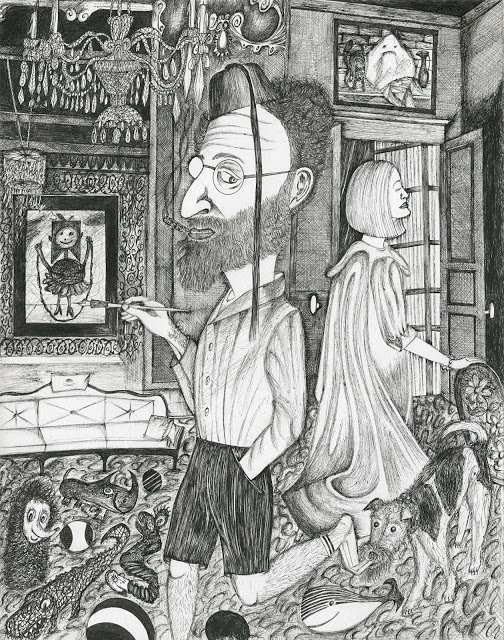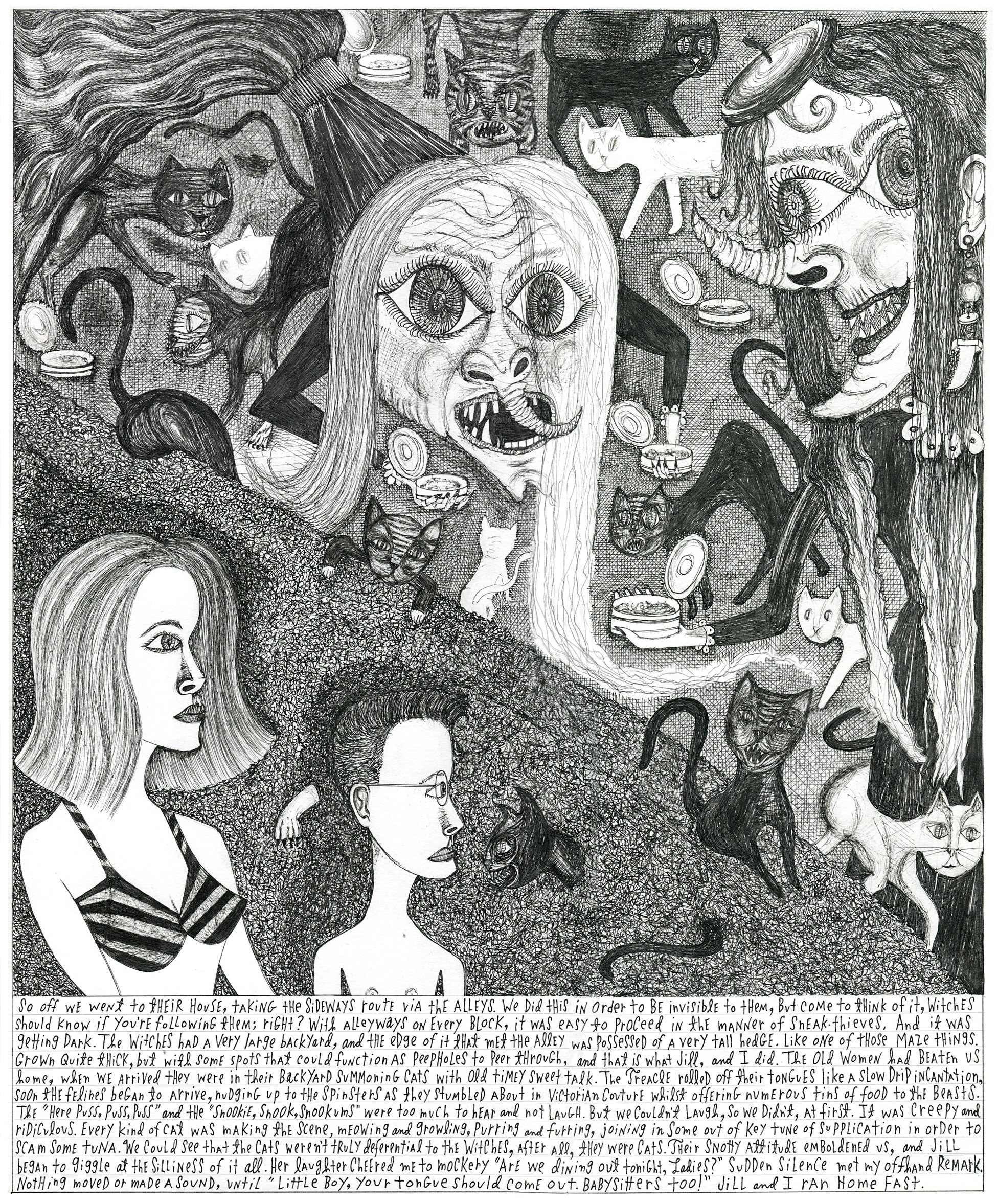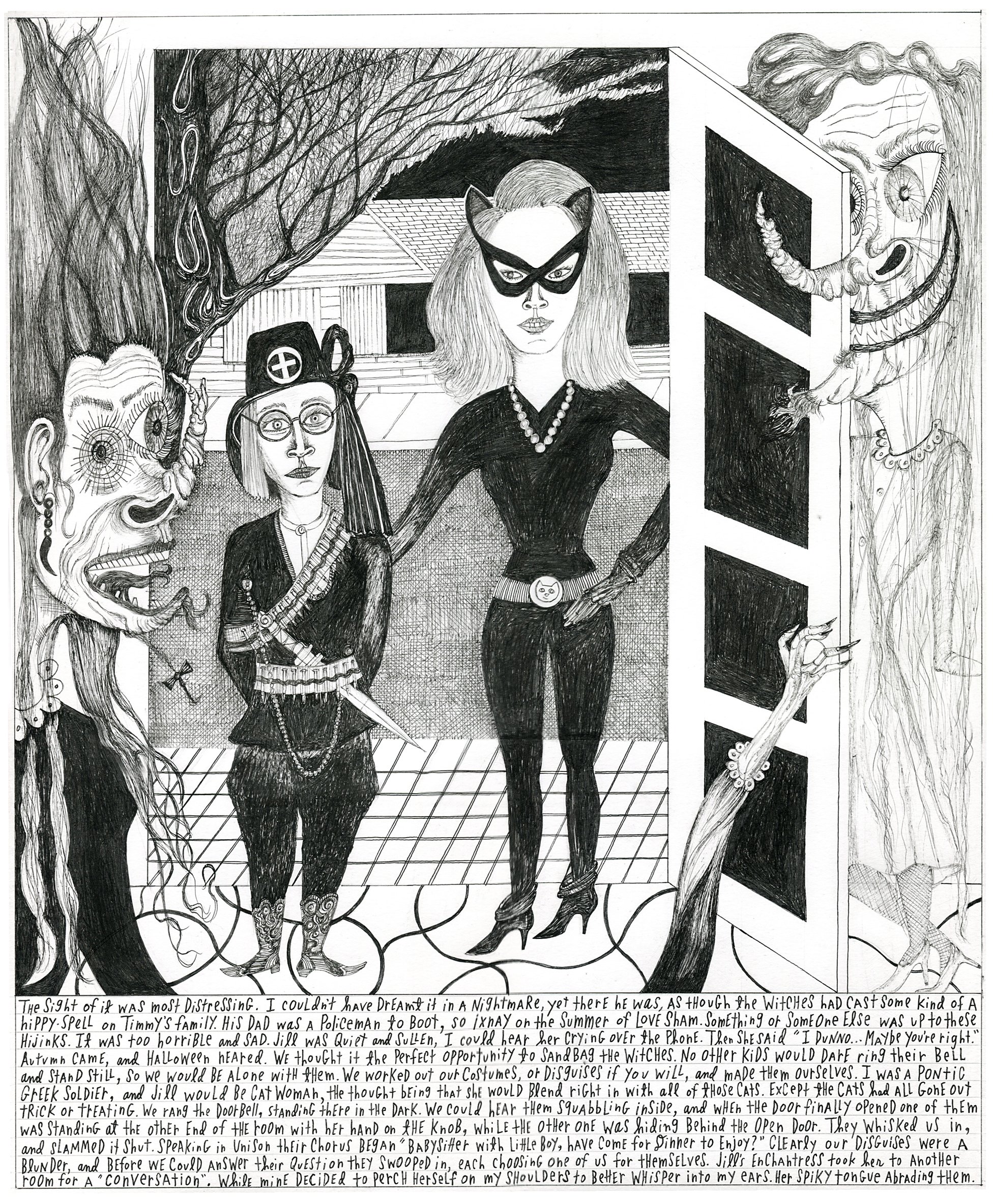A False Start

Quite a lot of the time, my ideas for comics get no further than the title page. This was going to be a story about an Evil Prince. Then I realized that no fiction I conjured up would come close to what the real ones do in the physical world, and that any attempt at satire is wasted time in this regard.
However, I may have achieved the longest title ever in comics history.
Read MoreThe Less I Do, The Better I Get
My work in comics is very rarely, if ever, written about. Not to say that it never is, but years can pass between mentions in the press, on websites, or a tweet. I certainly don’t “Google” my name to discover a buzz. That idea makes about as much sense to me as sitting down to a family dinner at sixteen years old while peaking on a hit of windowpane. This might be okay if you’re fairly immune to peer pressure, or if you simply must be certain that your sister really is a hybrid creature, part Bunny Rabbit, part Mariana Fruit Bat. Her sniffling nose twitching, eyes rolled back in her head as she hangs upside down from the dining room chandelier sucking the marrow from a chicken’s broken leg bone. Otherwise, just drop it and forget that I ever brought the idea up. So, a few weeks back I was perusing the website known as “The Comics Journal” when I stumbled across a review of a book titled “American Comics: A History” by Jeremy Dauber, a professor at Columbia University.
As I read the review, I was surprised to see that the critic mentioned my work as being undeservedly included in the book, because no one has ever heard of it. In fairness to this critic, he doesn’t single me out. He names five other authors in the same breath, so this isn’t personal, it simply reveals a curious orthodoxy. It is the canonical certainty that finds its way into every art form, like a weasel in the fruit shed, where the same few artists are written about over and over and over again. And goodness, gracious, tinkled on sputtering balls of fire! Is it ever boring or what?!
The critic also mentioned that the 572 page tome doesn’t contain a single illustration. Quite odd given the subject, and since I am of the same mind as Alice, that what is the use of a book, without pictures or conversation? I certainly wasn’t going to be spending $35.00 on a copy to find out what it says about my comics, it might be cruel! Curiosity did eventually get the best of me, so I made a few phone calls to the sort of bookstores that would carry this book, and EUREKA! Armed with my smart phone, I would browse the store, find the book, check the index, and when the coast was clear photograph the page.
Off I went like an international spook and this is what I found on page 386: “This anarchy of image can have thematic resonance: the power of Ted Jouflas’ Filthy comes less from the strong poetic rhythm and form it displays than the surreal, sometimes collage-based, sometimes blunt black-and-white swirling drawings of protagonists losing their minds (unless these are the clawing, rotted minds they already possess).”
A tip of my Stetson and a heartfelt thank you to Jeremy Dauber for reading one of my books, understanding its essence, and thinking it worthy of inclusion in his history. I’m very grateful. I’ve always liked comics. Which is why, I continue to occasionally make some of them. But the thing I don’t like about the comics world is that it is far too often like dirty little children, rolling around on a tree house floor, fighting over a Red Devil Marble.
This Is The Sting
Hello and Welcome!
Desperado Shindig! is going to be the place where I post short comic stories of mine that are unpublished. While known for the stunning bluster of emphasizing my inabilities while simultaneously convincing the CGI battered public that my incapacitation is my strength. My operations are so oblique as to be orthodox, while so genteel as to be shifty and roundabout.














